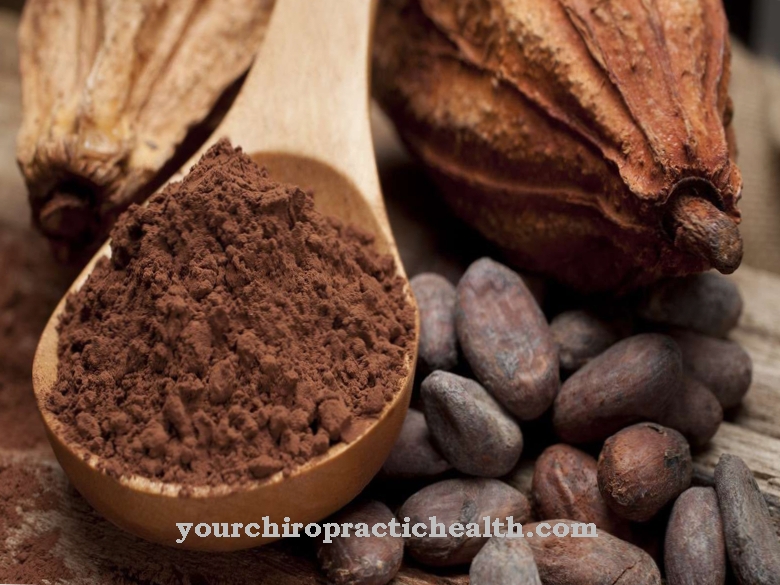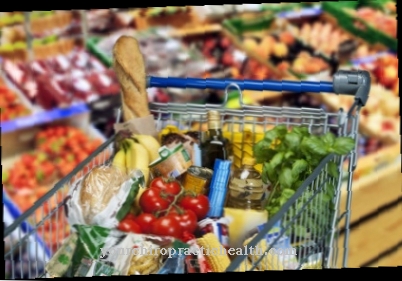The diet for stomach ailments cannot be squeezed into any scheme, because ultimately the individual eating habits, the intolerance observed, the job and the wallet of the patient determine how the food should be composed. The gastrointestinal patient must attach particular importance to the quality of the food.
Nutrition and diet for gastrointestinal complaints
He should only consume fresh and completely flawless products. Experience has shown that flatulent, cellulose-rich vegetables and legumes, heated and low-quality fats are poorly tolerated. Alcohol and nicotine consumption, possibly also coffee, have an unfavorable effect on a sick stomach.
Correct preparation in the kitchen is not the only decisive factor for the digestibility of a meal. The appetizing arrangement of the food as well as thorough chewing, rest and leisurely meals are important for the stomach sick. For better tolerability, he should eat five smaller meals a day instead of three large main meals.
Diet & nutrition for acute gastric mucosal inflammation
Acute gastric mucosal inflammation (also gastritis or gastric catarrh) is a very common gastric disease. The symptoms of this disease, loss of appetite, nausea and nausea, subside in a few days if a consistent diet is followed. Who of us has not suffered from such a bad stomach and found out how uncomfortable these complaints are?
How should the appropriate food be put together? It is best to start the treatment with a day of fasting on which the patient only consumes unsweetened black tea, peppermint tea or chamomile tea. A few dry rusks may be offered for this. On the second day of the illness, you can add mucous soups made from rice or oatmeal, boiled in water.
Better not to use sugar. If you can't do without the sweet taste, you can use sweeteners to taste. The next day the patient can enjoy some grated raw apple or apple rice and small amounts of glucose. If these foods are good for the patient, then the menu can be further developed.
First of all, you can use milk to prepare soups and porridges made from wholemeal flours, grits, oat flakes and brown rice. At lunchtime, you can have an easily digestible meal of mashed potatoes, steamed and strained vegetables (spinach, carrots, cauliflower, salsify, asparagus, kohlrabi) and boiled, lean veal, beef or chicken.
A small portion of apple sauce or apple compote would be suitable as dessert. Stale white bread or crisp bread, thinly coated with butter, a soft-boiled egg, lean boiled or raw ham will be good for the patient at this point. Processed cheese or some white cheese (but without onion and chives) can also be eaten. So the diet is gradually built up.
Those affected have to be cautious about eating hard-to-digest, high-fat foods as well as heated and tanned fats for a longer period of time. It is advisable to build up the diet slowly, as the inflammation of the stomach tends to last about 1 to 2 weeks longer than the symptoms.
Nutrition & diet for chronic gastric mucosal inflammation
Much longer diet treatment requires chronic gastritis (chronic inflammation of the lining of the stomach). The symptoms of this disease consist of a painful feeling of pressure in the stomach area, especially after eating. The patient clearly notices whether he is getting food or not.
In many cases, the cause of chronic gastritis is poor chewing and hasty and stressed eating. Eating irregularly and switching between hot and cold food and drinks at a meal as well as the excessive consumption of irritants such as coffee, alcohol and strong spices can also be decisive factors in the development of this disease. The purpose of the diet is to protect the stomach in its digestive work.
Diet plan

The sick stomach is relieved considerably by eating 5-6 small meals a day. The patient should make regular eating, absolute calm and concentration on food intake as well as slow eating and thorough chewing. All luxury foods, all fat-baked and fried dishes, very cellulose-containing vegetables, legumes, very acidic types of fruit, hot spices and very sweet dishes are usually poorly tolerated.
What could a daily menu look like? For breakfast the patient can have milk soup or milk porridge. Whole grain products, e.g. Wheat meal, whole wheat flour or oatmeal can be used. The still quite widespread opinion that a stomach patient only needs to eat fine flour products and white bread is by no means right.
On the contrary, whole grain products are valuable vitamin donors and therefore much more beneficial to the body. Mixed rye bread, soy bread, graham bread (always aged for 3 to 4 days) or crispbread, thinly coated with butter or honey, a soft-boiled egg, mild processed cheese or white cheese, are suitable for breakfast.
Thin black tea, mint tea or other herbal teas as well as cocoa, with little sugar, can be served as drinks.
Milk, buttermilk, sour milk or yoghurt can be recommended for the second breakfast. Sour milk products are generally very well tolerated. A few slices of the bread types already mentioned, thinly coated with butter, some fine liver sausage, very lean cooked or raw ham, processed cheese or white cheese can complete the meal.
Main meal after the diet
The lunch meal should, if possible, begin with a small portion of fresh food. It can consist of either fruit, vegetables or fresh potato juice for better digestion, possibly mixed with a little oatmeal gruel.
Later the patient should also try a salad made from well-chopped vegetables. Main dishes include stews made from carrots, kohlrabi and green beans cooked with lean beef, as well as broth noodles and fried ice cream with lean beef in a broth that is not highly concentrated.
Mashed potato soup (without bacon and onions) with wiener sausages is also very popular. Carrots, spinach, asparagus, black salsify, tender kohlrabi and cauliflower, steamed or steamed, are suitable as vegetables. When preparing it, you should avoid roux and add a pinch of butter after cooking.
Season with fresh herbs. Mashed potatoes, mashed potatoes or fresh, fluffy boiled potatoes, brown rice, pasta or macaroni can be added. Meat dishes made from lean veal, beef or chicken as well as lean fish enrich the diet plan. Cooking, stewing and, at a later point in time, light stewing or grilling can be used for preparation.
Diet sauces & desserts
Sauces should never be made from browned fat. The stomach sick can only tolerate sauces made from white roux, which can be seasoned with herbs, a little salt, lemon juice, possibly capers or nutmeg, bay leaves and spices. Compote made from apples, pears, strawberries or blueberries is served as dessert.
Whenever possible, only sweet, fully ripe fruits should be used, as experience has shown that all sour fruits cause discomfort. Raw fruit is tolerated very differently. Bananas, grated apples, soft pears, oranges, raspberries and crushed strawberries are recommended. Semolina, vanilla, chocolate or rice flammeri, sparingly sugared, are well suited as dessert or as a snack.
The aforementioned drinks as well as wholemeal rusks or biscuits can be consumed with the afternoon meal. The evening meal can be put together in a similar way to the breakfast meal. We should start with some salad again. In addition to the bread toppings already listed, there are also very fresh pork meat, tea sausage and lean, cold roast veal.

















.jpg)



.jpg)

.jpg)




